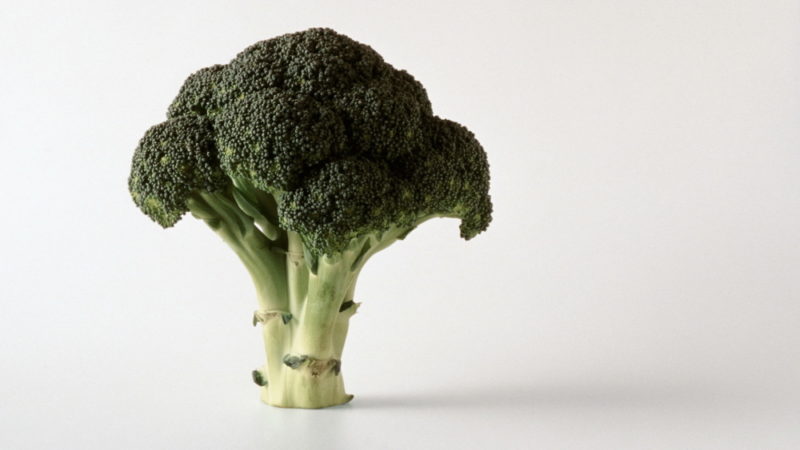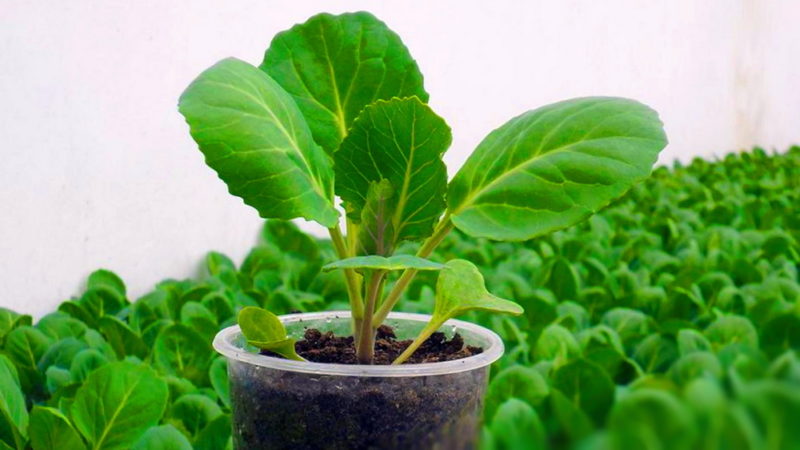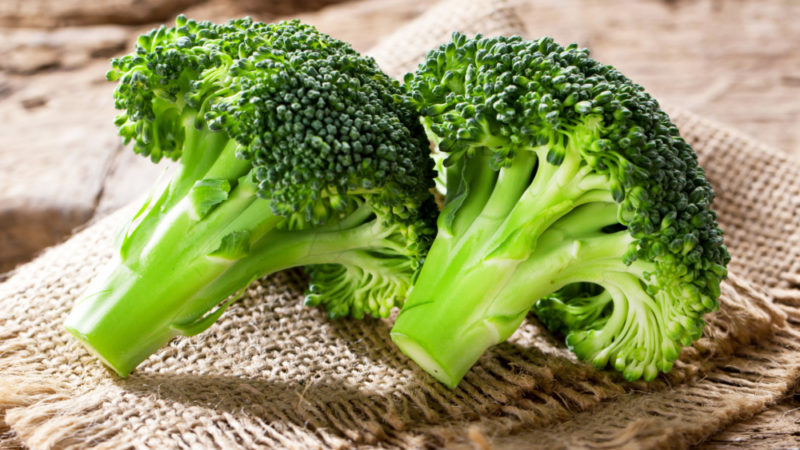Broccoli cabbage relatively recently appeared on the Russian market and immediately became the favorite of most consumers. It is incredibly healthy, tasty and does not cause much difficulty in growing. Cabbage of "eternal youth" comes from the warm countries of the Mediterranean Sea, but the numerous varieties bred by breeders around the world allow broccoli to be planted in different regions of Russia, even in Siberia, and to receive large yields.
Material Content:
Description and characteristics of varieties of cabbage
More than 35 varieties are registered in the State Register, and there are about 200 of them.
Everything can be classified by the ripening dates of the vegetable:
- early: 65 - 70 days (Agassi, Corvette);
- mid-season: 90 - 100 (Monterey, Arcadia F1);
- later: 130 - 145 days (“Maraton F1”, “Lucky F1”, “Continental”).
Early broccoli is more suitable for fresh consumption, it is not recommended to leave it in storage - it will quickly fade, lose its beneficial properties and may even harm the body. The shelf life of these vegetables is 2 weeks.
Later varieties, for a long time, retain all valuable qualities, as they have a higher density of succulent type heads and are suitable for harvesting for the winter.
Broccoli seeds come in:
- varietal - with the best taste, but finicky in growing ("Curly Head", "Vyarus", "Tonus", "Fortune", "Gnome", "Calabrese");
- Hybrid - more unpretentious to weather conditions and resistant to stress, disease and pests (Arcadia F1, Fiesta F1, Lucky F1, Monterey F1, Partenon F1).
The seeds of varietal vegetables retain their maternal properties, they can be independently harvested and sown.But hybrids - no. They have a splitting of signs and a completely unexpected plant can grow.
Species diversity can be divided into groups according to the shape of cabbage heads:
- classical (Calabrian) - a more common species in Russia with dense heads on short and thick stems;
- Italian (asparagus) - with a delicate taste, on long stems and with small inflorescences, popular abroad (varieties: "Danish dwarf", "Sicilian, White" and "Purple Cypriot").
Italian broccoli uses both stalks and buds, reminiscent of the taste of asparagus, so it is called asparagus cabbage.
Popular varieties.
- "Vitamin". Inflorescences are small dark green in color, weighing 150 - 300 g. From the planting date to harvest 72 to 90 days pass. It is necessary to collect immediately, without overexposing, otherwise the head of cabbage becomes loose, breaks up and begins to bloom.
- "Batavia F1". Ripens in 65 - 70 days. Large hybrid weighing 1 - 1.5 kg dark green. The head of cabbage is dense, but easily divided into inflorescences. Stress-resistant, not prone to cracking and disease.
- "Arcadia F1". Mid-season hybrid, head of medium density up to 400 g of weight, light green in color. After collecting the main head, it produces lateral small but numerous inflorescences (70 g). The variety is fruitful, growing at low temperatures and cramped conditions. Resistant to diseases and pests.
There are also frost-resistant varieties with different colors (violet, purple, yellow) and the form of head, for example, similar to colored, spiral-shaped Romanesco varieties with conical inflorescences, as well as with the possibility of conservation.
The main thing is to choose the right variety that matches the region and the purpose of cultivation.
Useful properties of broccoli
Broccoli cabbage - one of the most healthy vegetables, has valuable nutritional and dietary properties. The unique combination of components of the composition, optimally absorbed by the body, makes it indispensable in clinical nutrition. It is stewed, fried, boiled and this almost does not affect the vitamin-mineral balance. But, of course, fresh broccoli is more healing.
This culture is a storehouse of vitamins and minerals.
It has a lot of content:
- calcium - contributes to the growth and strengthening of hair and nails;
- magnesium - improves cardiac activity;
- potassium - removes excess salt;
- selenium - neutralizes heavy metals;
- sodium - controls nerve cells.
Manganese, copper, zinc are involved in hematopoiesis. It will share broccoli and many other minerals indispensable for the body.
So, in it:
- There are a huge number of vitamins: C, groups B, K, PP, provitamin A (beta carotene) and E - vitamins for beauty and eye health. By its methionine content (anti-ulcer component) broccoli is second only to asparagus.
- Proteins, fats and carbohydrates have an ideal ratio, and cholesterol - 0. The energy value is only 34 Kcal in raw form, and in fried broccoli - 35 Kcal.
- The composition in sufficient quantities contains minerals, fatty acids, fiber.
- A significant presence of folic acid enhances immunity, performance and mood, and prevents the occurrence of tumor processes.
- The presence of sulforaphane antioxidant, which stops the division of cancer cells, has been proven.
Cabbage is indispensable in the prevention and normalization of sugar in diabetes. It has anti-inflammatory and anti-sclerotic properties. Regular use of broccoli helps restore tissue and body cells.
Growing seedlings
In areas with a warm climate, cabbage is sown directly into the ground. In the middle lane and in the North, it is better to grow seedlings - it is more likely to catch crops before severe frosts, although some hybrids can withstand frosts of -7 ° C.
The timing of sowing seeds depends on the region of cultivation and the variety of broccoli, since it is necessary to take into account intolerance to cabbage heat.Usually start from the end of February or in March, the main thing is that at least 35 - 45 days pass before disembarking in open ground. Experienced gardeners adhere to the lunar calendar. It can be sown in 3 doses: first, an early variety, after 2 weeks - mid-season, and after 2 - late.
For growing seedlings, nutritious soil from humus and sod land is suitable in a ratio of 1: 1 or purchased from a distribution network. The main thing is that it is nutritious and breathable.
- Seeds before sowing are calibrated, disinfected and germinated to get high-quality seedlings.
- Sown in holes with a depth of not more than 1.5 cm at a distance of 3 cm from each other. Put 3 seeds in each hole, then to pick the best sprout when picking.
- Watered, covered with a film (to create a greenhouse effect), cleaned in a warm (+20 ° C) room for germination.
- When the shoots appear, they remove the film, the container is rearranged in a cool well-lit place with t +16 ° С during the day and +11 ° С at night (cabbage likes coolness).
- Further care comes down to regular watering - broccoli is very moisture-loving. Do not fill the ground, otherwise the "black legs" cannot be avoided. Use spraying instead of watering from a watering can.
- When 3 real leaves appear on the sprouts (we do not take into account the cotyledons) they begin to pick. Many do not, but in vain. Pikivka slows down the development of the aerial part of the sprout, allowing you to build up the root system. When picking, the strongest sprout is selected, 1/3 of the main (long) root is plucked off and transplanted into an individual pot with a burial in the soil to the cotyledons.
- For the period of adaptation, plants increase the room t to +21 ° C and shade them from sunlight.
- As soon as the sprouts take root, you must again move them to a cool, but very bright room. You may have to light up the phyto lamps, because from the lack of ultraviolet seedlings will be drawn.
- After 21 days, you can spray plants "Fitosporin-M" - for the prevention of fungal diseases.
Important! Before planting in open ground, seedlings should be gradually tempered, for example, taken out for several minutes, increasing the time daily. These manipulations help to accustom seedlings to open sunlight.
Outdoor landing
An important condition for obtaining a good harvest of asparagus cabbage is the place of cultivation, it is necessary:
- observe crop rotation (predecessors: potatoes, cucumbers, pumpkin);
- choose a sunny but shaded place in the sun;
- take into account that the culture needs nutritious, air- and moisture-permeable, disinfected soil (potassium permanganate, fungicide).
The timing of planting seedlings in open ground or sowing seeds depends on the weather conditions of the region and cabbage varieties, for example, in the southern regions they are planted at the end of April, and in the Urals only at the end of May or even in June. Regarding your area, you can check the dates with your seed seller.
Planting seedlings should be carried out in the evening or on a cloudy day. The distance between the sprouts is 30 - 40 cm, and between the rows - 50 cm. Add a handful of ash and humus to each well.
A sprout is planted together with a lump of earth, deeply buried in the ground, to these leaves (cabbage will give roots from a stem buried in the ground). And of course watered.
Broccoli Cabbage Care
Caring for cabbage is not at all difficult.
- Water on time, rarely (1 time in 5 - 7 days), but very plentiful. Make sure that the water does not stagnate.
- On particularly hot and dry days, irrigate the plant with cold water in the evening.
- Loosen the soil so that after watering or rain the soil crust does not form.
- Hole the stem, not allowing the roots to be exposed.
- Remove weeds that take moisture and food from the cabbage.
You can also feed plantings with complex fertilizers 3 times per season: during the period of growing up, at the beginning of tying of coats, during the pouring of heads.
Protection against diseases and pests
Theoretically, broccoli (especially its hybrids) is not susceptible to disease and pest attacks. In fact, like any plant with dysfunctional natural factors and care errors, it can get sick even in the seedling stage. Seeds can be infected, for example, by phomosis (dry rot).
The most common diseases:
- blackleg;
- powdery mildew;
- leucorrhoea;
- alternariosis.
Fungal diseases (pathogens - fungal spores that are in the soil and are activated at high humidity and high temperature) are promoted by frequent planting and an abundance of weeds, due to which there is poor ventilation of the plants and moisture retention. Treatment: treatment with “Fundazolum” (if heads of cabbage have not yet appeared), can be poured with potassium permanganate (5 g per 10 l of water), sprinkled with dry ash or sprinkled with a solution.
Excessive watering and stagnation of water lead to waterlogging of the soil, and even if the temperature is very high or low, not only fungi, but also viruses multiply:
- turnip mosaic;
- mucous and vascular bacteriosis;
- black ring spotting;
- keel.
It is practically impossible to cure cabbage from these and other viruses - it dies. The only cure is to locate and remove the plant in time so as not to infect others.
How to prevent the disease? First of all, it is necessary not to neglect the recommendations for growing cabbage, thoroughly disinfect the seeds and soil before planting. Observe crop rotation. Carry out preventive spraying with fungicides: "Fitosporin", "Fitoverm." Remove yellowing and drying leaves.
Unfortunately, broccoli also have a lot of pests, they not only gnaw leaves and suck their juice, but also carry fungi and viruses:
- cabbage aphid;
- cabbage scoop;
- Butterfly and caterpillar
- cruciferous flea;
- cabbage moth;
- slugs.
There are many popular methods of pest control - these are infusions, decoctions and solutions.
For example:
- vinegar solution (2 tbsp. l. essence in a bucket of water);
- ash solution;
- ammonia (25 ml per 10 liters of water);
- saline solution (20 g of salt per 1 liter of water);
- infusion of garlic and many others.
Plants should be sprayed both for prevention and for treatment. If they do not work, then use bio-insecticides: Lepidocide, Neem Oil, Pyrethrum.
For prophylaxis against slugs: broken brick sprinkled around the plant or other material with sharp edges.
Many odorous plants planted between cabbage bushes have a deterrent effect: marigolds, parsley, dill and the like.
Harvesting and storage
An important condition for the preservation of the taste and useful qualities of the vegetable is the harvested time. The buds on the bud should be tightly closed. The main thing is not to miss this moment, because in hot weather inflorescences can bloom quickly.
Harvest is recommended either early in the morning or late in the evening.
When cutting the head, leave the leg as long as possible, cut at an angle - this will prevent decay. Treat the cutting knife with alcohol.
Before long-term storage, broccoli are well dried.
- When placed in the basement, it can be stored up to 2 - 3 months on a damp cloth with a slice down. You cannot wet the cabbage itself. Only late varieties are suitable for this storage method.
- Cabbage can lie in the refrigerator without loss of freshness and usefulness for 1 week, if other fruits and vegetables that produce ethylene (apples, tomatoes) are not located nearby. Then the expiration date is still reduced.
- The best option for preservation is considered freezing. Previously, the head is sorted into small inflorescences, blanched in salt water, so that all insects that can hide between dense buds are gone, dried and frozen.
Growing broccoli is not a complicated and entertaining process. Follow all the recommendations and advice, and on your table for a long time there will be tasty and healthy dishes.

















